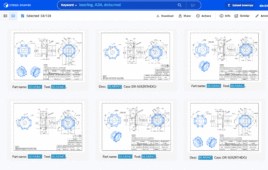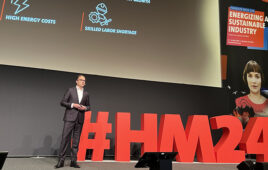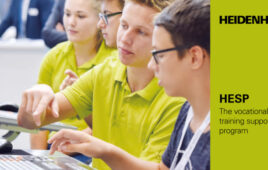Rapid Prototyping (RP) or rapid manufacturing is the automatic construction of physical objects using solid freeform fabrication. The first techniques for rapid prototyping became available about 20 years ago and were used to produce models and prototype parts.
Today, they are used for a much wider range of applications and are even used to manufacture production quality parts in relatively small numbers. Rapid prototyping takes virtual designs from CAD software, transforms them into thin, virtual, horizontal cross-sections and then creates each cross section in physical space, one after the other, until the model is finished.
Additive Fabrication (AF) is the technique of building a part by laying down successive thin layers of material. With additive fabrication, the machine reads in data from a CAD model and lays down successive layers of liquid, powder, or sheet material, and in this way
builds up the model from a series of cross sections.
Desktop manufacturing or personal fabrication is the use of a personal computer to drive a printer that deposits (or catalyses) material in layers to form three-dimensional objects. It can be used for making prototypes or objects that have limited public demand.
Direct Digital Manufacturing is a manufacturing process that produces physical parts directly from 3D CAD files or data using additive fabrication techniques, also called 3D printing or rapid prototyping. The 3D printed parts are intended to be used as the final product itself with minimal post-processing.
Electron Beam Melting (EBM) is a type of rapid prototyping for metal parts. It is often classified as a rapid manufacturing method. The technology manufactures parts by melting metal powder, layer per layer, with an electron beam in a high vacuum. Unlike some metal-sintering techniques, the parts are fully solid, void-free and extremely
strong.
Fused Deposition Modeling (FDM) is a type of rapid prototyping or rapid manufacturing technology marketed commercially by Stratasys Inc. Like most other RP processes, FDMworks on an “additive” principle by laying down material in layers.
Laminated Object Manufacturing (LOMTM) is a rapid prototyping system developed by Helisys Inc. In it, layers of adhesive-coated paper are successively glued together and cut to shape with a laser cutter.
Low-Volume Injection Molding creates functional parts from thermoplastics in short runs of up to 50,000 parts. Offers similar quality and accuracy to parts produced by normal production tooling, but often faster and at lower cost.
Low-Volume Layered Manufacturing describes additive fabrication in which the object constructed is the actual end-use part for manufacturing, rather than a prototype or model. Sometimes viewed as another term for direct digital manufacturing.
Photopolymer is a polymer that is cured by exposure to light, often in the ultraviolet spectrum.
Selective Laser Sintering(SLS) is a process by which 3D SLS prototypes are formed by fusing or sintering powdered thermoplastic materials or metals to form functional prototypes. A claimed advantage to SLS is the range of materials that can be used, including nylon, elastomers, metals (steel, titanium, alloy mixtures, and composites) and green sand.
Solid Freeform Fabrication (SFF) is a group of related techniques for manufacturing solid objects by the sequential delivery of energy and/or material to specified points in space to produce that solid.
Stereolithography (SL) is an additive process using a vat of liquid UV-curable photopolymer “resin” and a UV laser to build parts a layer at a time. On each layer, the laser beam traces a part cross-section pattern on the surface of the liquid resin. Exposure to the UV
laser light cures (solidifies) the pattern traced on the resin and adheres it to the layer below.
STL File is the standard data interface between CAD software and a prototyping machine. An STL file approximates the shape of a part or assembly using triangular facets. Tiny facets produce a higher quality surface.
Subtractive Fabrication is akin to conventional manufacturing techniques like machining, in which a part is shaped by removing or subtracting material from a piece of stock. The term
“subtractive fabrication” is intended to differentiate those processes from those of additive manufacturing so widely used in rapid prototyping.
3D Printing is the practice of making a solid (3D) part using an automated additive process.
::Design World::
Filed Under: Digital manufacturing





Tell Us What You Think!